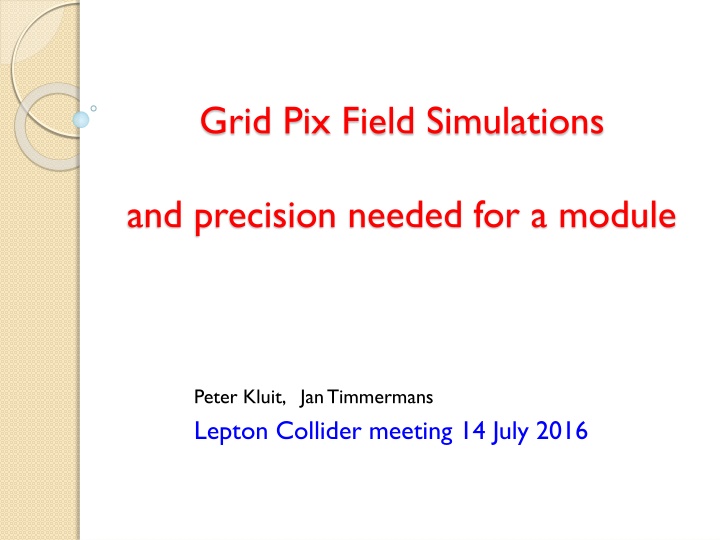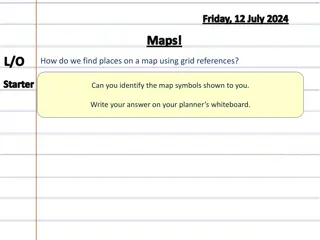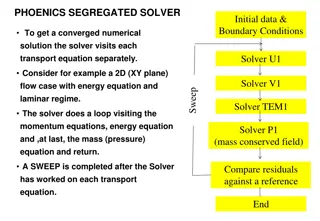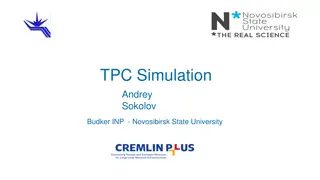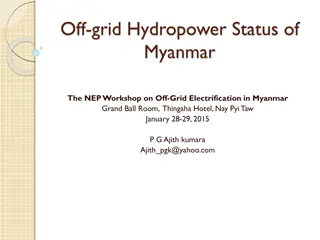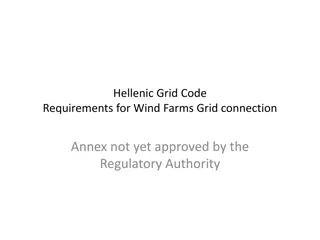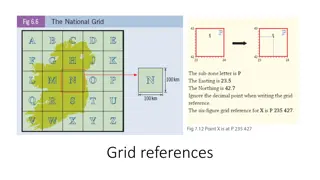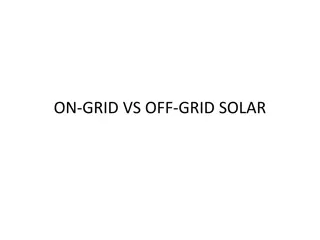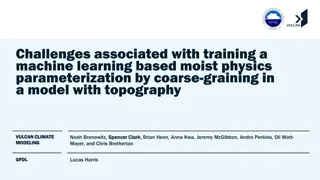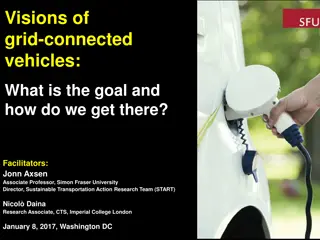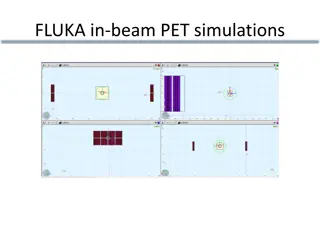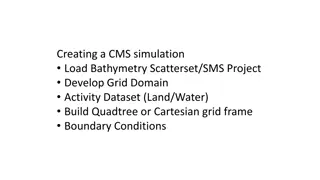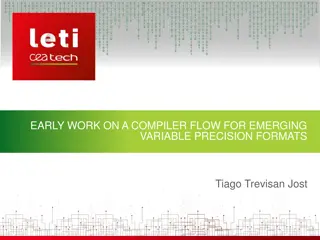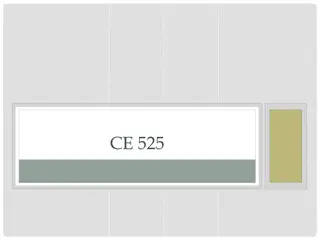Grid Pix Field Simulations: Precision Study for Module Design
Aimed at simulating various grid pix designs for a module, focusing on edge effects and E field deformations. The simulations use analytic expressions for E field in rectangular plates, with emphasis on studying the E field design and required mechanical-electrical precision for reducing deformations. Results show total deviation in x coordinate due to distance between chips.
Download Presentation

Please find below an Image/Link to download the presentation.
The content on the website is provided AS IS for your information and personal use only. It may not be sold, licensed, or shared on other websites without obtaining consent from the author.If you encounter any issues during the download, it is possible that the publisher has removed the file from their server.
You are allowed to download the files provided on this website for personal or commercial use, subject to the condition that they are used lawfully. All files are the property of their respective owners.
The content on the website is provided AS IS for your information and personal use only. It may not be sold, licensed, or shared on other websites without obtaining consent from the author.
E N D
Presentation Transcript
Grid Pix Field Simulations and precision needed for a module Peter Kluit, Jan Timmermans Lepton Collider meeting 14 July 2016
Introduction Aim is to simulate some possible different grid pix designs Current emphasis is on a simulation of the edge effects and the impact on E field deformations. The simulations uses the expressions for the E field for a rectangular plates of size a and b. In that case one has an analytic expression for the fields in Ex, Ey and Ez. The coordinate system is chosen thus that z is the drift field direction and xy defines the sensor plane. On the surfaces a charge is put. To define the ground planes mirror charges are put.
Introduction One can then simulate a grid pix sensor(s) with a grid of squared holes embedded in a homogeneous generated by two large parallel plates (so the TPC). See next slides for the simplified - simulated geometry. The aim is to study the E field design for a module and the needed mechanical and electrical precision. Edge effects are essential for this as well as the so-called T structures that are needed to make the E field as constant as possible in order to reduce the deformations at the edges of the chips.
Geometry TPC endplate Ez field = 13 V/mm 550 mm z x Start with 2 sensors in x 128x0.055 mm guard is in the sensor plane and extends to 100x 550 mm infinite plane
Sensor definition Note there is ground just below the grid at z = 700 m. The grid is 75 m above the grid. The ground under the Guard is at z = 0 The distance between the (2) chips in x is distChip it varies from 2 to 256 pixels. The ground in the empty area is at z =0. The sensor is not fully realistic, because the real grid doesnot extend till the edge of the chip. Also part of the area under the grid is not sensitive due to the presence of the dike. Guard Grid @ 775 m (z) -400 V z Chip 700 m (z) height distChip/2 size Chip (x) 128*55 m
Results By calculating the field in the x and z directions starting from z = 550 mm till the sensor at z = 0.7 mm one can calculate the total deviation in the x coordinate, due to the presence of a non zero distance between the chips. If distChip = 0 the deviation is zero. The deviation has been fitted and is described by: double p1 = 1.25; double p2 = 0.45 + 0.2/(p0+0.11); double p3 = -700.-140./(p0+0.11); double y0 = x (in mm); double y1 = x+2*p0; double f00 = p3/(1+p1*y0*y0+p2*sqrt(y0*y0)); double f11 = p3/(1+p1*y1*y1+p2*sqrt(y1*y1)); deviation (in microns) = f00-f11;
Results for distance between chips So empty zone == distChip Top curve corresponds to distChip = 2 pixels etc. x = x distChip/2 So x = 0 always corresponds to the chip edge.
Interpretation of the Results One observes that even for small distance between the chips of 110 microns, there is a sizeable deviation that goes up to 250 microns. Part of the drifted electrons (at x = 0) will not end up on the sensor. For very small deformations (up to 20 microns) one has to stay 1 mm away from the chip edge. The other extreme (large distance): what happens if a chip is switched off or not presented. This is the 256 pixels case. This is not so different from having a 2 mm (40 pixels) gap between the chips. Note that we have a 2 mm gap due to the bonds. It shows that it is important to put e.g. a well designed T shaped structure to define the Electric field over the bonding area. If one puts a full T structure around the chip one can also compensate for the distortions that are introduced because of the fact that the grid field does not cover the full chip plus distance between the chips. A full structure will also limit the deviation in case a neighbor chip is switched off.
The impact of asymmetries The following three simulations were performed with a zero distance between the chips: 1) The voltage on the left chip is changed by 10% (40 V) 2) The distance of the grid to the chip is changed from 75 to 70 microns on the left chip. 3) The thickness of the left chip is changed from 700 to 800 microns As in the other simulations the total deviation is evaluated It may well be that we can and must reach better specifications than the variations listed above.
Results for asymmetries x = x distChip/2 So x = 0 always corresponds to the chip edge.
Interpretation impact of asymmetries - The voltage of the grid can be regulated with a precision that is way better than 4 V. So no problem. - The 5 microns for the grid distance going from one grid to another is probably realistic. To realize 2 micron is maybe achievable. - The (z) height of the chip is pretty essential and from the plot it looks like we have to reach 10 microns (on the chip depth) to keep the deviations small enough. That might not be so easy.
T structure(s) around the edges of the sensor Similar sensor structure but now we simulate 256 pixels The T structure is indicate on the left. The distance in z wrt grid is 500 m. The size of the T is distChip (symmetrical around x = 0). The voltage is tuned to minimize the deviations. Simulations were done for distChip = 40 (80) pixels This allows to cover the space between the chips (no bonds). For the chip side that will be bonded one needs more space (80). T structure 500 m Guard Grid @ 775 m (z) -400 V z Chip 700 m (z) height distChip/2 size Chip (x) 256*55 m
Results for a T structure 40 pixels After tuning of the Voltage on the T structure, the deformations are reduced from 600 m to max. 100 m. Deformations at a distance of more than 1 mm from the edge of the grid are smaller than 50 m. NB here x is not shifted and the chip edge is indicated
Results for a T structure 80 pixels After tuning of the Voltage on the T structure, the deformations are reduced from 650 m to max. 140 m. Deformations at a distance of more than 1 mm from the edge of the grid are smaller than 70 m. NB here x is not shifted and the chip edge is indicated
Long T structure(s) The long T structure (as proposed by Fred Hartjes) extends over the edge of the chip and grid. The overlap in x is 200 microns. The T is placed 300 microns above the grid. Simulations were done for distChip = 80 pixels Similar sensor structure with 256 pixels Long T structure x overlap 200 m dz = 300 m Guard Grid @ 775 m (z) -400 V z Chip 700 m (z) height distChip/2 size Chip (x) 256*55 m
Results for a long T/ structure One can see that a long T structure can compensate the deviations, the overlap will create however a zone with large deformations near the chip edge. If this edge is in the inactive zone of the chip (dike area) it is OK.
Optimal Long T structure(s) The long T structure (as proposed by Fred Hartjes) extends over till the grid starts. So the long T covers the area that has ground or undefined on the chip and stops where the grid defines the HV. This looks to me the most optimal configuration. The z distance of the structure should come from the MT/ET. The overlap is defined by the chip edge and where the grid starts. The total T length is defined by the minimal distance between chips including the bonds. The guard could be designed in a similar way as shown in picture. Long T structure x overlap 200 m dz = 300 m Guard Grid @ 775 m (z) -400 V z Chip 700 m (z) height distChip/2 size Chip (x) 256*55 m
What precision do we need for a module? Using the T structures of 40 and 80 pixels the deformations for a distance larger than say 5 pixels from the edge (dike) are max 50-70 microns (slides 13 and 14). 1. The chip height must be controlled at the 10-20 micron level to stay below 50-70 microns (slide 10). 2. The distance of the grid wrt chip should be constant to better than 1 micron (averaged over chip, slide 10). 3. The voltage must be regulated to better than 4 V (1%). So no problem (slide 10). 4. The height of the T structure is now chosen to be 0.5+0.775 mm. The height itself should be constant at the 10-20 micron level (same as chip item 1 and slide 10). 5. The width of the T (top) and its placement wrt the chip should stay below 10 microns (slide 7). The first two items have to be ensured during the chip production process. Items 4,5 depend on the production of the T structure and 2,4,5 on the assembling (gluing) of the chips and T structure on the module.
Design with a long T structure . The long T should cover the part of the chip that has ground. On the edge of the grid one has metal (above dike) and a resistive layer (in blue). The T should extend to the edge of the metal layer (+100 m overlap) . support grid bond pads chip PCB cooling connector
